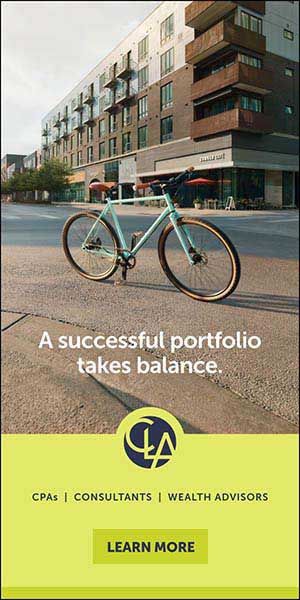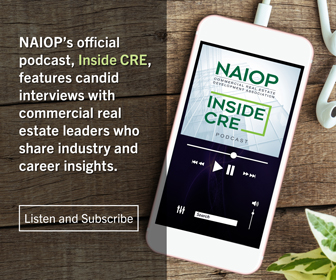Hybrid Goals? Reinventing the Office, Faster and Better Than Before

The pandemic ushers in a new era for workspace design and development.
Workplace changes resulting from the COVID-19 pandemic are sweeping workers forward into an era of hybrid work, giving businesses a historic opportunity to rewrite the rulebook.
Amid the lessons of mass remote work, organizational leaders adapted their processes, tools and resources to support new ways of working — and in turn, employees found new ways to be productive and thrive.
Yet the shared experience of day-in and day-out work-from-home life also revealed that the office was not dead. Far from becoming obsolete, its vital role as a hub for social and collaborative interaction intensified in the wake of Zoom burnout. The monotony of even the best-appointed home offices, and the recurring “can you hear me now” technology dilemmas, have gotten on workers’ last nerves.
Enter: the hybrid workplace. According to a recent Blue Skyre IBE survey of workplace leaders, 58% of respondents said they’ll allow employees to choose how many days to work remotely, while 48% plan to let employees work remotely anywhere they choose.
The rest of the time, organizations must deliver a healthy, vibrant and experiential workplace where prize talent actually wants to show up.
Achieving the Right Hybrid Workplace
To shape what is fast becoming a new hybrid normal, global firms from Coca-Cola to Deloitte are retooling workplace roadmaps. In a series of interviews with Unispace, business leaders said they want to normalize flexible working.
Most are going beyond offering flexible schedules by rethinking how real estate can strategically fuel organizational performance. Should they relocate, expand or renovate to give employees the new experiences they need, while supporting business goals? Whatever the answer, the pressure is on to reinvent the workplace — and the sooner the better.
To achieve a hybrid workplace fit for a unique workforce, and at the speed and scale that’s needed, it’s time to leave behind old ways of managing workplace change.
Conventional methods disperse workplace strategy and design initiatives across multiple management teams and companies. In a world of compressed timelines, that disjointed approach has become clunky, expensive and time-consuming. Instead, organizations can use an integrated approach to seamlessly blend these functions, driving process consistency, higher-quality outcomes and shortened project timelines.
Shape an Experiential Workplace Strategy
A thriving hybrid workplace is one where teams can connect, problem-solve, brainstorm and catch up with colleagues. It offers a space where staff feel supported both as professionals and as people.
So, what do employees value in their professional environments? What inspires them most in a workspace, and what do they like most about working remotely? What ratio of in-person to remote work makes sense for different roles, in different departments? How can technology create equity between in-person and offsite colleagues?
Answering these questions is specific to a company; there is no one-size-fits-all answer. Collecting and distilling data is an important step as companies begin the journey to achieving the strategy, design and ultimately construction of a thriving hybrid workplace.
COVID-19 has transformed the workplace landscape and the way people work. Flexibility is here to stay — and so are agile workplace strategies that give people a sense of connection and fulfillment.
“Our research indicates that the work environment will exist to satisfy our social and collaborative needs, as well as providing more private space for deep-thinking or ‘flow’ work — supporting the growing need for work environments that enable neurodiversity,” says Albert De Plazaola, Unispace’s global director of strategy. “Employees are far more likely to use their home office for more individual work, such as emails, online learning, spreadsheets, everyday administrative tasks and more. This kind of hybrid work model repositions the work environment as an organizational asset as well as an idea and revenue generator, while providing employees much-desired flexibility and choice.”
Now is the time to apply the hard-won lessons of the pandemic to workplace design. An experiential, collaborative space incorporating the best of remote and in-person work can help meet employee needs and support different workstyles. In a post-pandemic world, knowledge workers will shine brighter in social, inclusive environments purposefully designed to help them feel authentic, connected and healthy.
Embracing a New World of Work
COVID-19’s impact on the workplace didn’t happen by design — but there is an extraordinary chance to create something good out of a challenging time. As leaders across the world rethink the workplace, the role of office design is moving far beyond aesthetics, becoming a key component of organizational success.
Albert De Plazaola is global principal of strategy at Unispace. Hannah Hackathorn is senior principal, head of design for the Americas at Unispace.
Five Considerations for a Healthier, More Human Workplace
Every organization defines their optimal workplace environment differently. But the following principles will help decision-makers in the effort to achieve a more experiential workplace.
1. Understand how design affects business outcomes. Reinventing a workplace is a big job, but it is a smoother process when organizational leaders recognize the critical ways design can impact the larger business goals.
2. Think beyond 9-5 with physical and digital features. Amid the rise of hybrid work, it is important to create spaces where people can connect wherever, and whenever, makes the most sense. This includes integrating connective technology in design, like sophisticated videoconferencing rooms where teams can ideate alongside their remote-working colleagues.
3. Empower employee choice with an interior neighborhood of curated experiences. Instead of asking teams to shuffle between office and conference rooms according to task, give them a variety of space types to choose from depending on their work styles and needs. Picture, for starters, a quiet reading room, just down the hall from a huddle area, which sits next to a large conference room with retractable doors that open for larger events. Meanwhile, a large town hall or café area offers opportunity for both work and play. Even stairwells and corridors can be configured for casual interaction and easy flow.
4. Think human. People aren’t cookie cutters, so why are so many offices exactly that? As social, playful beings, humans thrive in unique environments. Cultivate environments where fundamental human activities — people watching, having fun, experimenting, learning and playing — can all take place.
5. Infuse the brand throughout the workplace. In this time of intense transformation, a brand-focused environment gives teams that invaluable sense of ”we’re all in this together,” contributing to a more cohesive culture and focused productivity. Plus, memorable branding resonates with clients and guests visiting the space.






